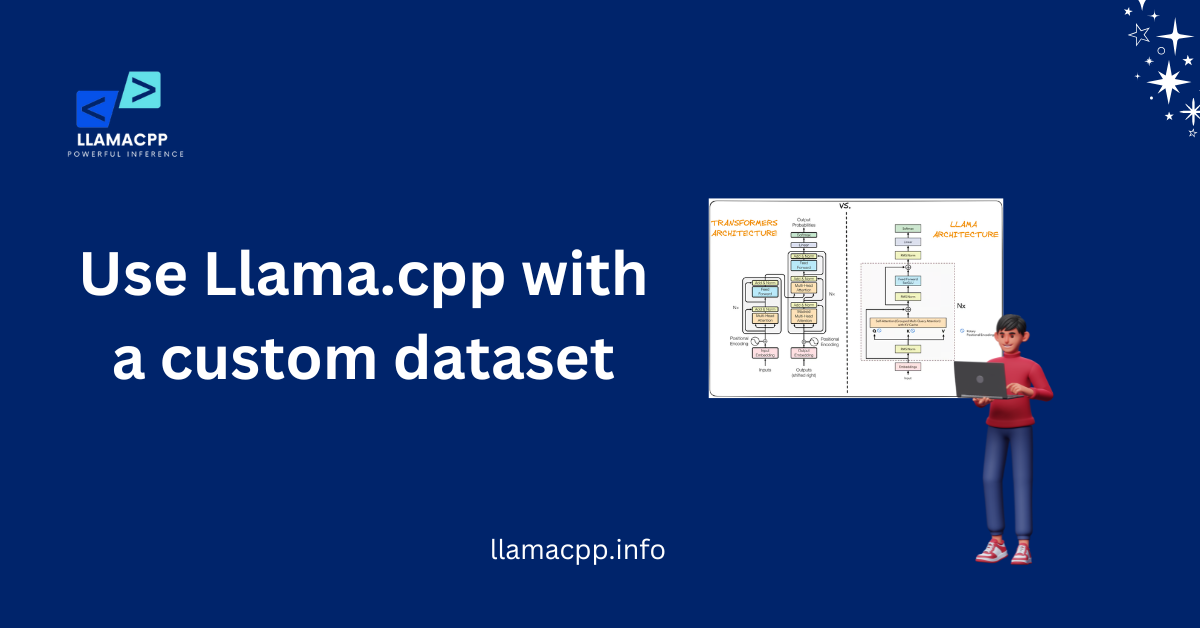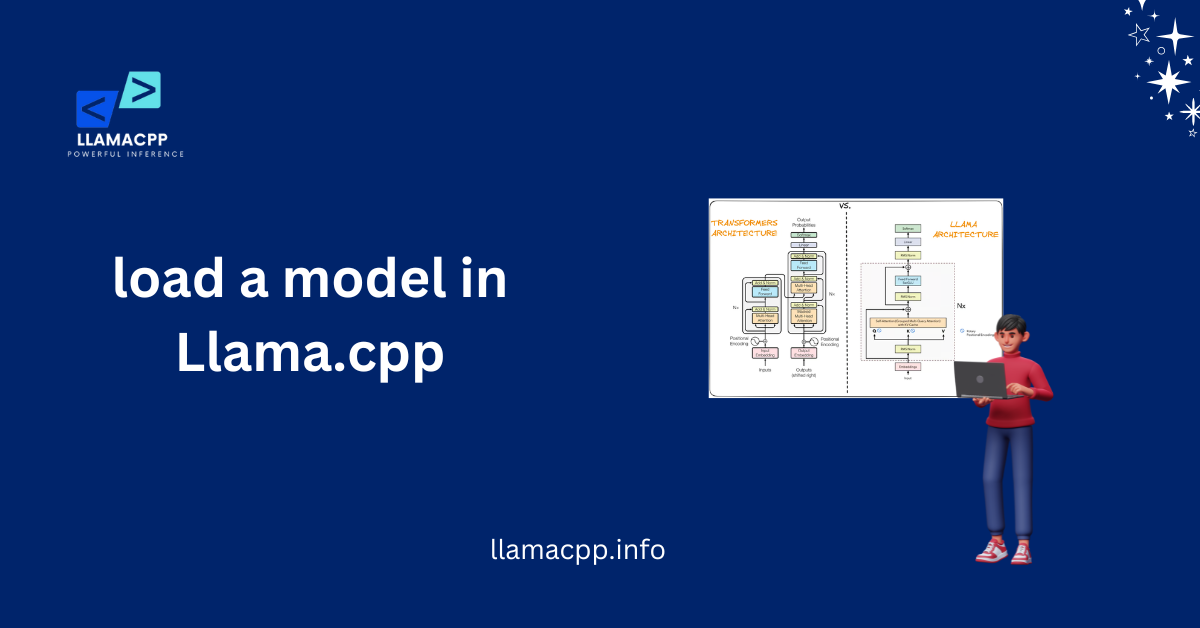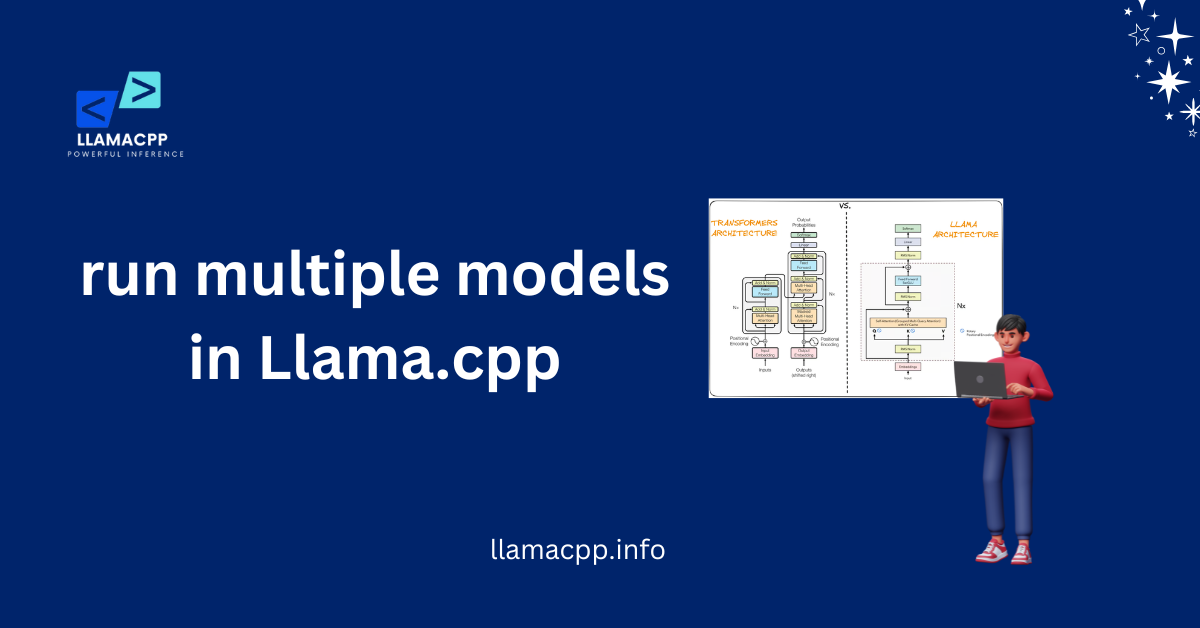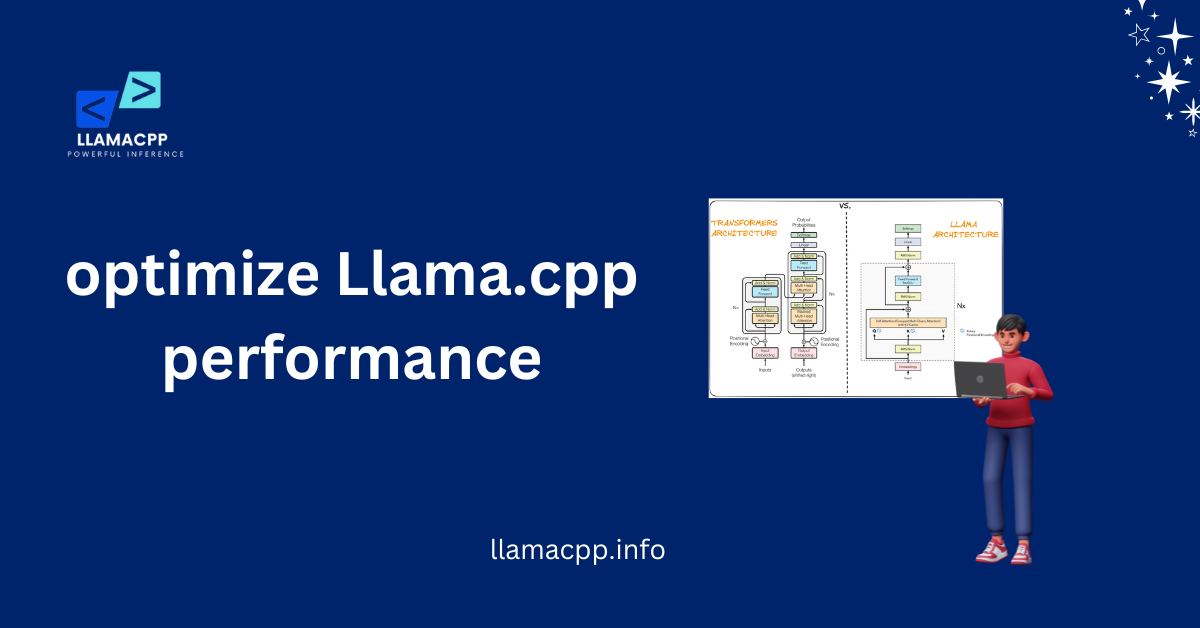Table of Contents
ToggleIntroduction
You can fine tune a model in Llama.cpp to get it to work the way you want it to. The key to getting an AI model to understand your needs is to fine-tune it. It helps train the model on custom data, making it more accurate for your task. Whether you need a chatbot, a writing assistant, or a research tool, fine tuning ensures better results.
It is easy to do this with Llama.cpp. Llama.cpp can be used on regular computers, while other ways need potent GPUs. This means you don’t need expensive hardware to train your model. Minor changes are made to the model to make it more innovative and more functional. In this guide, we’ll take you through each step. You’ll learn how to easily make changes to your model, from setting it up to deploying it.
How do I open Llama.cpp?
Llama.cpp is a lightweight and fast tool for running AI models on regular computers. It lets you use big language models without having to buy pricey GPUs. This makes it great for developers and researchers who want to experiment with AI on their machines. Whether you’re working on text generation, chatbots, or research, Llama.cpp provides a simple way to get started.
One of its best benefits is its ability to fine tune a model in Llama.cpp without high end hardware. Unlike traditional AI tools, it works to make models run smoothly on CPUs. This means you can train and customize models without worrying about powerful computers. Llama.cpp is a great choice if you want an AI model that works well with your needs.
Do you know how Llama.cpp works?
- Llama.cpp runs AI models by loading pre trained weights and performing inference on CPU or GPU.
- It processes input data, applies computations through the model layers, and generates predictions or responses.
- Supports optimization techniques such as mixed precision (FP16/INT8), gradient checkpointing, and memory efficient loading.
Why Should I Use Llama.cpp?
Llama. CPP is quick, light, and simple to use. It doesn’t require complicated setups, making it ideal for beginners. If you want to fine tune a model in Llama.cpp, this tool provides a simple and effective way to do it.
Is it possible to change models with Llama.cpp?
Yes! To make AI smarter, you can teach it with your data. You can change a model in Llama.cpp to make it work for you, whether you need a chatbot or a text helper.
Why Tweak a Model So Much?
- Tweaking allows the model to better align with your specific dataset and task requirements.
- Improves accuracy and relevance of predictions by fine tuning hyperparameters and layers.
- Reduces unnecessary computations by focusing on essential parts of the model.
- Enhances efficiency, enabling faster training and inference on limited hardware.
- Helps prevent overfitting by adjusting the model to match your data rather than generic patterns.
- Allows experimentation to find the best configuration for performance and resource usage.
Get More Correct Results
A standard AI model may not understand unique themes or industry specific terms. You train a model with the correct data when you fine-tune a model in Llama.cpp. This helps it give better replies and reduces mistakes.
Get Better Results
Models that have been fine-tuned work faster and better. It might take a while for a general model to work, and it might not always get it right when you tweak a model in Llama.cpp, it works better and responds more quickly.
Make AI fit your needs.
Each job or business has its own needs. A general AI model might not always work when you fine-tune a model in Llama.cpp, you shape it according to your goals. It will give you the best results whether you need it for research, writing, or automation.
Getting the space ready
- Ensure your system has enough storage to accommodate model files, datasets, and temporary files.
- Clear unnecessary files and applications to free up disk space and improve performance.
- Organize directories for Llama.cpp, models, and datasets for easy access and management.
- Check available RAM and VRAM to confirm your hardware can handle the intended model size.
- Prepare environment variables and paths for dependencies like Python, CUDA, or ROCm.
- Test the setup with a small model or dataset to ensure the workspace is ready for full-scale use.
Put the needed tools in place.
To use Llama.cpp with a custom dataset, you need Python and a few essential tools. Installing them is easy and takes just a few minutes.
Set Up Llama.cpp
Get Llama.cpp from the official source and set it up on your computer. This step ensures that everything works right before you start fine tuning.
Get the training data ready.
Your model needs the right inputs to learn well. Sort and clean your dataset before you fine-tune a model in Llama.cpp to make it more accurate.
Getting the Base Model ready
It is essential to have a good base model in Llama.cpp before you start tweaking a model. For teaching, this model is the place to start. It has general information in it, but you need to change it to fit your needs. Picking the right base model changes the end result.
Once you have the base model, you need to make it work best for training. This covers setting the parameters, formatting the data, and making sure it works with Llama.cpp. A well-prepared base model makes fine-tuning more accurate and less likely to go wrong.
Pick Out the Right Style
Not all AI models are the same. Pick one that fits your project goals. A good base model makes it easy to fine-tune a model in Llama.cpp with better results.
Improve the model settings.
Essential factors like batch size and learning rate should be changed before training. When you fine-tune a model in Llama.cpp, these changes help make sure it learns quickly.
Check to see if it works with Llama.cpp.
You need Llama.cpp to work with your base model. Please change it to the right style so that you can use fine-tune a model in Llama.cpp without any problems.
Why Make the Training Dataset?
To make AI work better, you need a good sample. Fine tune a model in Llama.cpp, and the model will learn from the data you give it. When the information is good, the AI will give better answers. Results can be wrong if the data isn’t correct or isn’t organized well. That’s why it’s so essential to make a dataset that is well organized.
Your dataset should fit your specific needs. Train the model with honest conversations if you want it to be able to answer customer questions. If you need to do research, use related articles or papers. A well organized dataset helps with fine tuning and makes sure the model learns precisely what it needs to.
Collect Relevant Data
To improve a Llama.cpp model, you need data that helps you reach your goal. Using random or unrelated data will not improve things.
Clean up and arrange the information.
Remove errors, duplicates, and irrelevant information before training. A clean dataset helps when you fine-tune a model in Llama.cpp, making training more efficient.
How to Format the Data Correctly
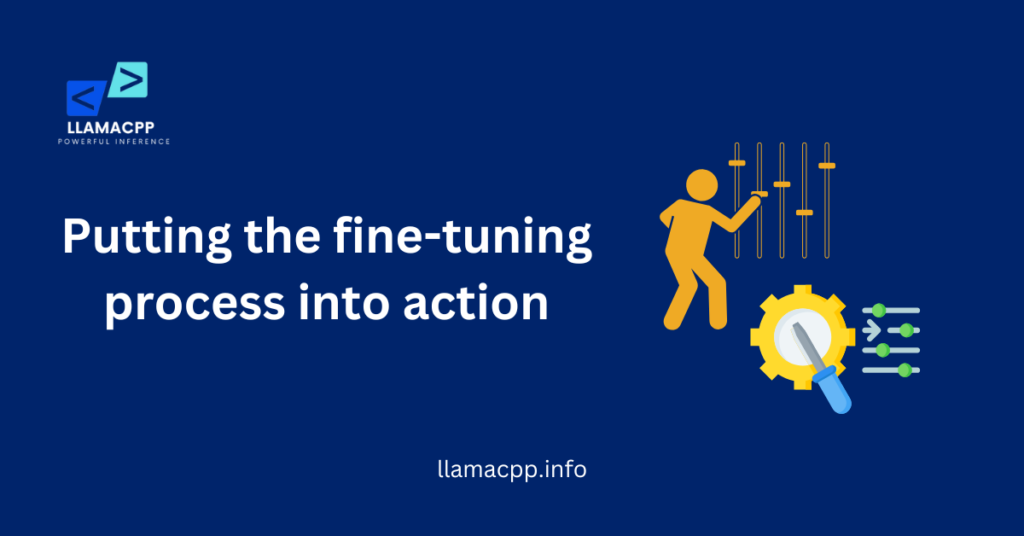
Putting the fine-tuning process into action
Now that everything is ready, we can increase inference speed in Llama.cpp to make some changes to the model. This is the part where you really learn. The model will look at the data you used to train it and make changes so that it gives you better answers. Its goal is to become more innovative and more accurate for your needs.
It takes time to fine tune, depending on the size of your dataset and the power of your technology. The model learns in stages, and each turn improves it. Keeping an eye on the process helps ensure everything is going as planned. If you do it right, the plan will work better and more efficiently.
Start making small changes.
Run the fine tuning command in Llama.cpp to make small changes to a model. The model will now start to learn from your data during the training phase.
Keep an eye on the training.
Keep an eye on the process. Look for mistakes or unexpected results. The process of fine tune a model in Llama.cpp works right if you check the accuracy levels.
Make changes and improvements as needed.
If the model isn’t improving, change the settings. Changing the batch size or learning rates can help to fine-tune a model in Llama.cpp. Small changes can have a significant effect on how well something works.
The fine-tuned model is merged and put into use.
- Combine the fine tuned weights with the base Llama.cpp model to create a fully optimized version.
- Place all merged model files in the correct directory for easy access and execution.
- Test the model with sample inputs to verify improvements in accuracy and performance.
- Adjust parameters like batch size, context length, and precision for optimal efficiency.
- Enable GPU or CPU acceleration to speed up inference and reduce processing time.
- Monitor system resources during deployment to ensure smooth and stable operation.
- Integrate the model into applications such as chatbots, AI tools, or other services.
- Maintain the merged model by periodically updating and retraining it to keep results relevant.
- Document the deployment process for future reference and reproducibility.
- Optimize performance settings to handle large datasets or heavy workloads effectively.
- Ensure compatibility with Llama.cpp updates to avoid errors and maintain stability.
Conclusion
There needs to be an organized way to fine-tune a model in Llama.cpp. Every step is crucial, from setting up the environment to getting the dataset ready to start the training process. By deploying the model and merging the fine-tuned data, all the gains are kept. The model can then be used for real-world tasks.
Fine-tuning improves the model’s performance, making it better at certain jobs. It stays accurate and reliable by being tested and updated regularly. If you follow the right steps, you can make an AI model that is specifically tailored to your needs.
FAQs
1. What does it mean to “fine-tune” a model in Llama.cpp?
When you fine tune a model in Llama, cpp, you add new data to an existing AI model to train it with in order to make it more accurate and sound at a specific job. This lets you change the model so that it works better.
2. If I could use a model that has already been trained, why should I fine-tune one in Llama…?
Already trained models can do many different things, but fine-tuning helps them do specific jobs better. It makes it easier for the model to understand your wants and come up with better answers.
3. How much input does Llama.Cpp? need to fine-tune a model?
How much data you need depends on how complex the job is. A small dataset might be enough for making easy changes. For significant gains, it’s best to use a bigger, better dataset.
4. What kind of hardware do I need to fine-tune Llama.cpp?
For fine-tuning, you need a computer with a strong GPU, enough RAM, and enough space for files. The exact needs change depending on the size of the model and information.
5. How do I test the model that has been fine-tuned before I use it?
When testing, different inputs are sent to the model, and its answers are checked. Comparing its performance before and after fine tuning makes it easier to be sure of its accuracy and dependability.










